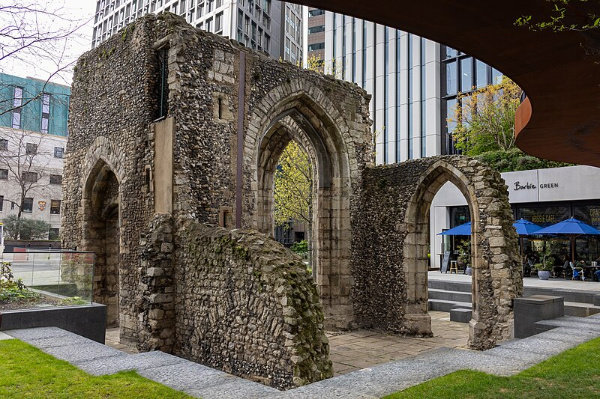
Architect Nicholas Hawksmoor was a key figure in the creation of the fabric of London as we know it, working alongside Sir Christopher Wren as well as alone, and responsible for numerous works with can still be seen in London today.
Hawksmoor was born into a yeoman farming family in Nottinghamshire in around 1661-62 but little else is known of his early life. He probably received a fairly basic education but is believed to have been taken on a clerk to a justice in Yorkshire before, thanks to encountering a decorative plasterer by the name of Edward Gouge, travelling to London.
There, Hawksmoor was introduced to Wren who, agreed to take on the young man as his personal clerk at just the age of 18. He moved through a number of junior positions in Wren’s household before becoming deputy surveyor at Winchester Palace – between 1683 and 1685 – under Wren.
He went on to work with his mentor on numerous further projects; these included Chelsea Hospital, St Paul’s Cathedral, Hampton Court Palace and Greenwich Hospital as well as Kensington Palace where, thanks to Wren’s support, he was named clerk of works in 1689 (as well as deputy surveyor of works at Greenwich). He remained in these posts for some 25 years before he was removed thanks to political machinations (although he later returned to the secretaryship).
 Hawksmoor also worked with Sir John Vanbrugh, assisting him in building Blenheim Palace, taking over command of the job in 1705. Vanbrugh made him his deputy and Hawksmoor later succeeded him as architect at Castle Howard in Yorkshire, designing a number of monuments in the gardens, including the great mausoleum.
Hawksmoor also worked with Sir John Vanbrugh, assisting him in building Blenheim Palace, taking over command of the job in 1705. Vanbrugh made him his deputy and Hawksmoor later succeeded him as architect at Castle Howard in Yorkshire, designing a number of monuments in the gardens, including the great mausoleum.
Hawksmoor is described as one of the masters of the English Baroque style – Easton Nelson in Northamptonshire, which he designed for Sir William Fermor, is an exemplar of his work (and the only country house for which he was sole architect, although it remain uncompleted).
Hawksmoor also worked on buildings for the university at Oxford and while All Soul’s College was among buildings he completed, many of his proposed designs were not implemented for various reasons (as were grand plans he had for the redesign of central Oxford).
From 1711, Hawksmoor was busy again in London where, following the passing of an Act of Parliament, he was appointed as one of the surveyors to a commission charged with overseeing the building of 50 new churches in London.
The commission only completed 12 churches, but half of them were designed by Hawksmoor (and he collaborated with fellow surveyor John James on two more). Hawksmoor’s completed churches include St Alfege in Greenwich, St George’s, Bloomsbury, Christ Church in Spitalfields, St George in the East in Wapping, St Mary Woolnoth, and St Anne’s Limehouse (the churches he collaborated on include James are St Luke Old Street and the now demolished St John Horsleydown).
In 1723, following Wren’s death, he was appointed Surveyor to Westminster Abbey and, as well as aspects of the interior (some of which still survive to this day) designed the landmark west towers (although they weren’t completed until after his death).
Hawksmoor died at his home in Millbank on 25th March, 1736, from what was described as “gout of the stomach”, having struggled with his health for a couple of decades previously. He was buried at the now deconsecrated church in Shenley, Hertsfordshire.
Hawksmoor was survived by his wife Hester by a year, and a daughter, Elizabeth.
PICTURES: Top – The West Towers of Westminster Abbey; Right – St Anne’s, Limehouse. (David Adams)



